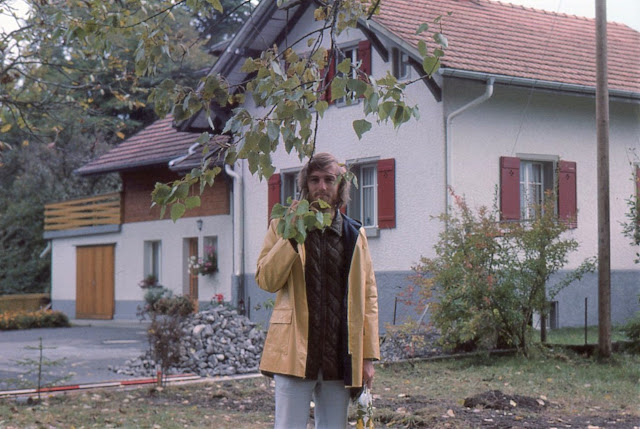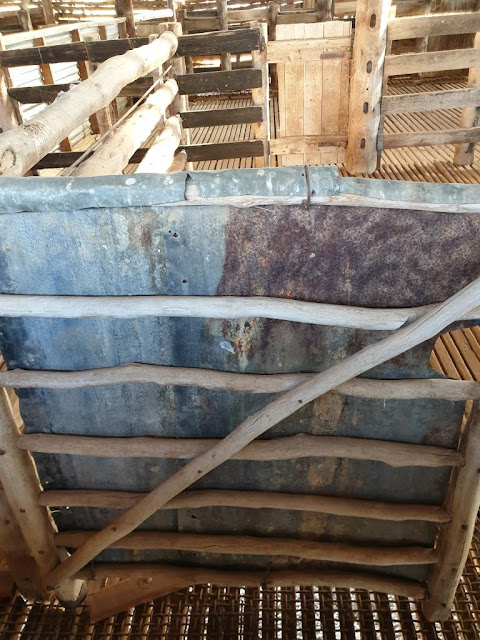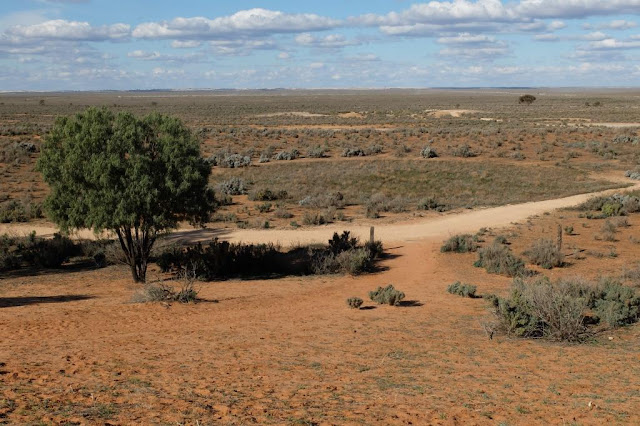We spent four nights in Bangkok Thailand in June 1975. It was a stopover on the way to London and 5 months of travel in Europe, the UK, Scandinavia and Russia.
During the very quiet months of March, April and May this year I finally got around to sorting through our slides (mostly poor quality) of that trip and the various reports on our adventures we sent home via barely legible hand written aerogrammes to our families.
I was 23, Rob was 24. Every dollar had to count on this trip; our goal was to see and experience as much as we could on $20 a day for the 5 months of travel. Just imagine being that young, that inexperienced, and no internet, no mobile phones, no digital camera to record it all and no Trip Adviser either.
Lots of young Aussies and Kiwis were on the move then and many of them would have done more adventurous/risky things than we did, but looking back much of what we saw and experienced at that time was extraordinary. It was a time of no mass tourism; we crawled all over Stonehenge and the Acropolis and didn't queue to see anything (except for Lenin's Tomb in Red Square) and we camped on an unspoiled Greek Island without a cruise liner in sight. We backpacked in Europe before the European Union was formed and borders were opened and currencies standardised. We were in London during a period of intense IRA (bombing) activity (by the Balcombe Street Gang) and experienced moments of terror when we got caught late at night, deep in the Underground during a bomb scare. We travelled in Russia when it was still part of the USSR under the very tight control of Brezhnev and the Communist Party and took an afternoon pass through Checkpoint Charlie into the austerity and paranoia of East Berlin. We partied in Croatia when its citizens proudly proclaimed their loyalty to the republic of Yugoslavia (in public anyway) and left Spain early because of the tension (and military guards) on the streets in the weeks before General Franco (the dictator) died. Looking back on it all, the world changed so much in the intervening years.
We arrived in steamy Bangkok on the 20th June 1975, not too long after the shocking “fall of Saigon” and the end of the war in nearby Vietnam. In Bangkok we "really felt like foreigners for the first time in our lives". We were in utter culture shock for much of our stay, but had a wonderful time especially the day we visited Ayutthaya about 70klm north of Bangkok. We used every possible means of transport: train, truck, barge and taxi and we loved seeing the countryside - rice paddies, water buffalo, every square inch of space utilised, the traditional dancers in one of the temples in the Ayutthaya complex and walking around the grounds of the old Royal summer palace.
We ended up loving our first taste of travel in SE Asia but we didn't get back to Bangkok again for another 25 years and by then it was hard for us to recapture the exoticism and authenticity of our first visit - despite our travel budget being much more generous.
We landed in London early morning on the 24th June. Our friend Peter met us at the airport and after dropping off our luggage (3 changes of clothing each for 5 months) walked to Kensington Gardens to enjoy the sunshine. We were so excited to be in London!
We saw all the big ticket sights in London. Rob near St Paul's Cathedral, London
We set off on a 17 day self drive tour of England, Wales and Scotland on Wednesday 2 July (the same day our darling niece Claire was born back in Canberra). Our hire car was from Carnies car Hire in Lots Road Chelsea - a yellow Hillman Imp... it was a bit loose around the edges but it made the distance and the price was right!
Three weeks and an awful lot of miles later we embarked, along with 22 other young Aussies and Kiwis on our 35 day Transit (bus) Tour to Scandinavia and Russia.
One of our first stops was the very touristy flower market at Aalsmeer near Amsterdam and then the fishing village of Volendam where we succumbed to pressure to have our pictures taken in Dutch national dress. Now I am so glad we did as this is the only in-focus, correctly exposed (but cheesy) picture of us both on our big OS adventure!!
Paul, John and Rob on Hardangerfjord, Norway
Making camp on our first night in Russia - near Leningrad (now St Petersburg)
Us in front of the famous St Basil's Cathedral in Red Square Moscow
Rob in the grounds of the Berlin Reichstag, looking over towards "The Wall" and East Berlin beyond.
After another break in London after the Transit Tour we set out with a plan to "see Europe" in 10 weeks or so, using our pre-purchsed Eurail Passes and youth hostels and camp sites wherever possible to keep costs down. Our plan was to travel by train, clockwise, starting in Belgium, then on to Germany, Austria, Yugoslavia, Greece, Italy, Switzerland, Spain and ending our journey in France before returning to London in mid-November. We carried everything we needed, including our tent and camping gear on our backs. We were bona fide "backpackers".
This was me, very excited, on Thursday 4th September, straight off the hovercraft from Ramsgate, in Calais, France.
Rob eating lunch in a Brussels park. The budget didn't extend to eating out too often.
Eating lunch (again) by the Rhine River, Koblenz, waiting for the steamer to Mainz.
Rob on the Rhine River cruise ..
Just as we arrived by overnight train in beautiful Split Yugoslavia.
Rob on beautiful Hvar Island walking from our B&B to catch the boat to Dubrovnik.
An arty shot of Rob, taken at Dubrovnik Airport waiting for the flight to Skopje (an awful place in 1975).
Rob resting at the Athanae Nike Temple (with modern day Athens in the background - not too polluted that day)
Waiting for the coach (in Athens) to take us to the port of Patras (from there to Corfu).
Me at Pompeii - on entering Mt Vesuvius canal street
The usual touristy shot at the leaning bell tower of Pisa Cathedral
Rob standing on the rampart of the San Guisto Castle in Trieste - looking out to the Italian coast (very strong wind that day)
Rob in front of where we stayed in Interlaken, Switzerland.
Sunny morning in Interlaken - walking to the railway station on the morning we left for Spain.
Rob in the courtyard of El Greco's house, Toledo, Spain
Rob on the beach at Cannes, south of France.
Rob after having his hair cut and beard shaved in Nice, France - no longer the Jesus Christ look.
Me on a cold afternoon in the Champs Elysees near the Place de la Concorde, Paris.
Rob in front of Le Louvre on a cold Sunday morning
View up the Avenue des Champs-Elysees from the Obelisk in the Place de la Concorde, Paris.
We got back to London on Wednesday 12th November after our 10 weeks of adventures in Europe. We were sick of our 3 changes of clothing by then, being constantly on the move and living out of our packs, especially as the weather got more and more cold, wet and wintry.
It felt like luxury to settle in for the next 10 nights at the very well heated Heidi's Opal House (boarding house) at Vicarage Gate in Kensington.
We left London (for a 3 night stopover in Singapore on our way back home to Australia) on Saturday 22 November - and back to strange sounding Aussie accents, a laconic airport welcome from the customs staff and then the long awaited joys of seeing family again!
During the very quiet months of March, April and May this year I finally got around to sorting through our slides (mostly poor quality) of that trip and the various reports on our adventures we sent home via barely legible hand written aerogrammes to our families.
I was 23, Rob was 24. Every dollar had to count on this trip; our goal was to see and experience as much as we could on $20 a day for the 5 months of travel. Just imagine being that young, that inexperienced, and no internet, no mobile phones, no digital camera to record it all and no Trip Adviser either.
Lots of young Aussies and Kiwis were on the move then and many of them would have done more adventurous/risky things than we did, but looking back much of what we saw and experienced at that time was extraordinary. It was a time of no mass tourism; we crawled all over Stonehenge and the Acropolis and didn't queue to see anything (except for Lenin's Tomb in Red Square) and we camped on an unspoiled Greek Island without a cruise liner in sight. We backpacked in Europe before the European Union was formed and borders were opened and currencies standardised. We were in London during a period of intense IRA (bombing) activity (by the Balcombe Street Gang) and experienced moments of terror when we got caught late at night, deep in the Underground during a bomb scare. We travelled in Russia when it was still part of the USSR under the very tight control of Brezhnev and the Communist Party and took an afternoon pass through Checkpoint Charlie into the austerity and paranoia of East Berlin. We partied in Croatia when its citizens proudly proclaimed their loyalty to the republic of Yugoslavia (in public anyway) and left Spain early because of the tension (and military guards) on the streets in the weeks before General Franco (the dictator) died. Looking back on it all, the world changed so much in the intervening years.
We arrived in steamy Bangkok on the 20th June 1975, not too long after the shocking “fall of Saigon” and the end of the war in nearby Vietnam. In Bangkok we "really felt like foreigners for the first time in our lives". We were in utter culture shock for much of our stay, but had a wonderful time especially the day we visited Ayutthaya about 70klm north of Bangkok. We used every possible means of transport: train, truck, barge and taxi and we loved seeing the countryside - rice paddies, water buffalo, every square inch of space utilised, the traditional dancers in one of the temples in the Ayutthaya complex and walking around the grounds of the old Royal summer palace.
We ended up loving our first taste of travel in SE Asia but we didn't get back to Bangkok again for another 25 years and by then it was hard for us to recapture the exoticism and authenticity of our first visit - despite our travel budget being much more generous.
We landed in London early morning on the 24th June. Our friend Peter met us at the airport and after dropping off our luggage (3 changes of clothing each for 5 months) walked to Kensington Gardens to enjoy the sunshine. We were so excited to be in London!
We saw all the big ticket sights in London. Rob near St Paul's Cathedral, London
We set off on a 17 day self drive tour of England, Wales and Scotland on Wednesday 2 July (the same day our darling niece Claire was born back in Canberra). Our hire car was from Carnies car Hire in Lots Road Chelsea - a yellow Hillman Imp... it was a bit loose around the edges but it made the distance and the price was right!
Three weeks and an awful lot of miles later we embarked, along with 22 other young Aussies and Kiwis on our 35 day Transit (bus) Tour to Scandinavia and Russia.
One of our first stops was the very touristy flower market at Aalsmeer near Amsterdam and then the fishing village of Volendam where we succumbed to pressure to have our pictures taken in Dutch national dress. Now I am so glad we did as this is the only in-focus, correctly exposed (but cheesy) picture of us both on our big OS adventure!!
Paul, John and Rob on Hardangerfjord, Norway
Making camp on our first night in Russia - near Leningrad (now St Petersburg)
Us in front of the famous St Basil's Cathedral in Red Square Moscow
Rob in the grounds of the Berlin Reichstag, looking over towards "The Wall" and East Berlin beyond.
After another break in London after the Transit Tour we set out with a plan to "see Europe" in 10 weeks or so, using our pre-purchsed Eurail Passes and youth hostels and camp sites wherever possible to keep costs down. Our plan was to travel by train, clockwise, starting in Belgium, then on to Germany, Austria, Yugoslavia, Greece, Italy, Switzerland, Spain and ending our journey in France before returning to London in mid-November. We carried everything we needed, including our tent and camping gear on our backs. We were bona fide "backpackers".
This was me, very excited, on Thursday 4th September, straight off the hovercraft from Ramsgate, in Calais, France.
Rob eating lunch in a Brussels park. The budget didn't extend to eating out too often.
Eating lunch (again) by the Rhine River, Koblenz, waiting for the steamer to Mainz.
Rob on the Rhine River cruise ..
Just as we arrived by overnight train in beautiful Split Yugoslavia.
Rob on beautiful Hvar Island walking from our B&B to catch the boat to Dubrovnik.
An arty shot of Rob, taken at Dubrovnik Airport waiting for the flight to Skopje (an awful place in 1975).
Rob resting at the Athanae Nike Temple (with modern day Athens in the background - not too polluted that day)
Waiting for the coach (in Athens) to take us to the port of Patras (from there to Corfu).
Me at Pompeii - on entering Mt Vesuvius canal street
The usual touristy shot at the leaning bell tower of Pisa Cathedral
Rob standing on the rampart of the San Guisto Castle in Trieste - looking out to the Italian coast (very strong wind that day)
Rob in front of where we stayed in Interlaken, Switzerland.
Sunny morning in Interlaken - walking to the railway station on the morning we left for Spain.
Rob in the courtyard of El Greco's house, Toledo, Spain
Rob on the beach at Cannes, south of France.
Rob after having his hair cut and beard shaved in Nice, France - no longer the Jesus Christ look.
Me on a cold afternoon in the Champs Elysees near the Place de la Concorde, Paris.
Rob in front of Le Louvre on a cold Sunday morning
View up the Avenue des Champs-Elysees from the Obelisk in the Place de la Concorde, Paris.
We got back to London on Wednesday 12th November after our 10 weeks of adventures in Europe. We were sick of our 3 changes of clothing by then, being constantly on the move and living out of our packs, especially as the weather got more and more cold, wet and wintry.
It felt like luxury to settle in for the next 10 nights at the very well heated Heidi's Opal House (boarding house) at Vicarage Gate in Kensington.
We left London (for a 3 night stopover in Singapore on our way back home to Australia) on Saturday 22 November - and back to strange sounding Aussie accents, a laconic airport welcome from the customs staff and then the long awaited joys of seeing family again!
























































































